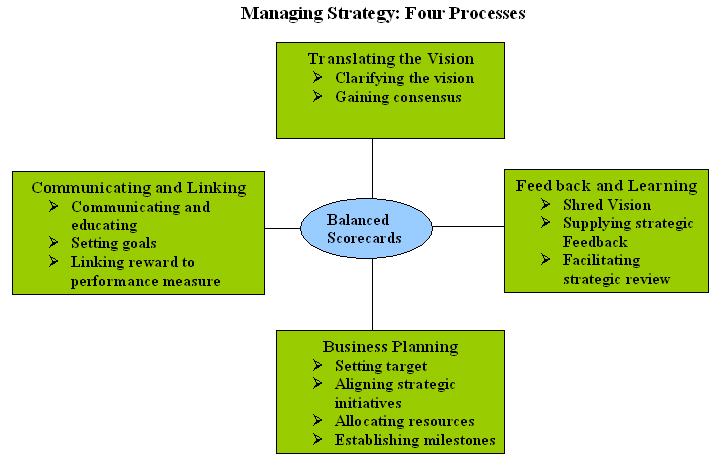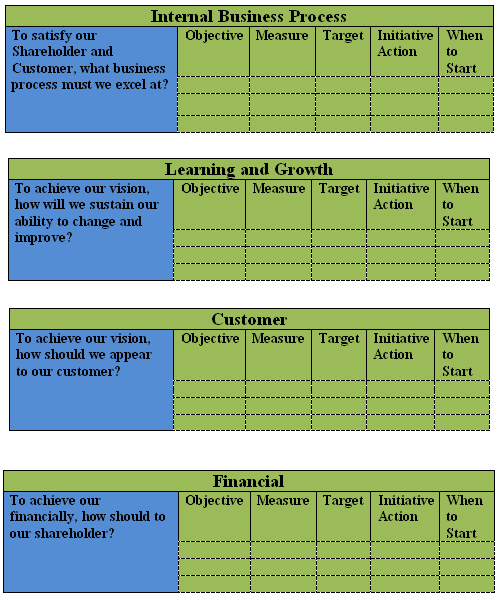In
1992, Robert S. Kaplan and David P. Norton’s concept
of balanced scorecards revolutionized conventional thinking
about performance metrics. By going beyond traditional
measures of financial performance, the concept has given
a generation of managers a better understanding of how
their companies are really doing. This article was published
in HBR, July-August 2007.
A
company around the world transform themselves for competition
that is based on information, their ability to exploit
intangible assets has become far more decisive than
their ability to invest in and manage physical assets.
Several years ago, in recognition of this change, a
concept was introduced called balanced scorecards. The
balance scorecards supplemented traditional financial
measures with criteria that measured performance from
three additional perspectives- those of customers, internal
business processes, and learning and growth.
Manager
using balanced scorecards do not have reliance on short-term
financial measures as the sole indicators of the company’s
performance. The scorecard lets them introduce four
new management processes that, separately and in combination,
contribute to linking long-term strategies objectives
with short-term action.

The first new processes translating the vision-helps
managers build a consensus around he organization’s
vision and strategy.
Translating
Vision and Strategy: Four Perspectives

The second process communicating and linking- lets managers
communicate their strategy up and down the organization
and link it to departmental and individual objectives.
The
third process –building planning- enables companies
to integrate their business and financial plans.
The
fourth process- feedback and learning- gives companies
the capacity for what we call strategic learning.
Use of this in Professional Life:
We
can use these Balance scorecards in our regular professional
life. E.g. As a Marketing Consultant, we can use this
scorecard by defining our Customer (by defining how
we should appears to our customer), Financial strength
(how should the firm appears to the shareholder), Internal
Business Process (What business processes must excel
at?) and Learning and Growth (We sustain our ability
to change and improve?). All these components are inter-linkage
to each other and it must have correlation with all
others.
|